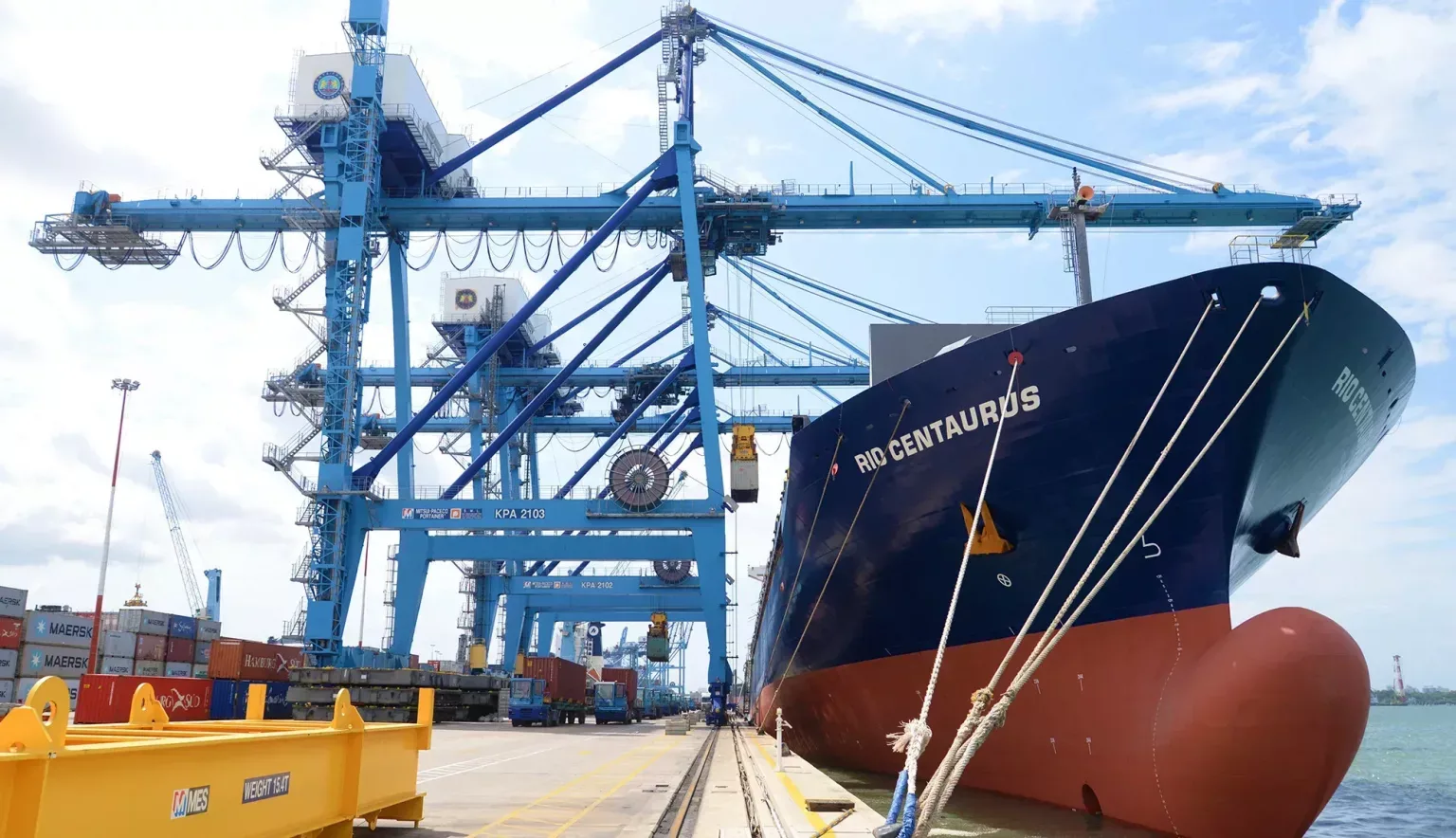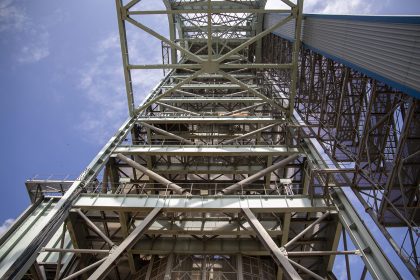The Port Management Association of Eastern and Southern Africa are placing their focus on regional development, as hubs of growth and gateways to the continent’s landlocked hinterland.
- INTRODUCTION
- INTERVIEW: PORT MANAGEMENT ASSOCIATION OF EASTERN AND SOUTHERN AFRICA (PMAESA)
- Could you talk us through the origins of PMAESA, how it came about, and its initial vision?
- Since inception, how has PMAESA developed and progressed in terms of its key objectives and the messages it tries to get across?
- What do you find most exciting about the port logistics industry across Eastern and Southern Africa?
- On the flip side, what are the biggest challenges it currently faces?
- Has the association got any projects in the pipeline you wish to highlight?
- How do you see the port logistics sector developing across the region within the next five years or so?
INTRODUCTION
Ports are a vital cog in Africa’s supply chain.
Not only are they key exporters of commodities such as oil, coal, and precious metals, but they are also essential to robust and diverse economic growth through the import and export of manufactured goods and other products.
If Africa is to realise its growth ambitions, the continent needs to take advantage of the economic potential of its ports and shipping sector.
In Eastern and Southern Africa, ports are the nodes of entry to coastal host countries such as Kenya, Tanzania, Mozambique and South Africa. The evolution and development of ports create numerous benefits for host cities and countries, creating significant employment opportunities for local workers, and increasing the demand for port-related labour that is usually unskilled and from the port’s immediate vicinity.
Ports are also of critical importance to the continent’s vast landlocked hinterland, and thus a natural focus for regional development.
As a whole, Africa has a total of 16 landlocked developing countries (LLDCs), according to the United Nations Conference on Trade and Development (UNCTAD), accounting for exactly half the number of LLDCs across the entire world.
These countries, which in Eastern and Southern Africa include the likes of Botswana, Burundi, Eswatini, Lesotho, Malawi, Rwanda, Zambia and Zimbabwe face special trade and development challenges, arising from their lack of territorial access to the sea and geographical remoteness from international markets.
LLDC exports and imports are required to transit through at least one neighbouring country, and often the mode of transport has to be changed frequently. This subsequently increases the cost of trade for LLDCs and prevents them from effectively integrating into the global trading system.
However, existing port facilities and operational practices at ports in Eastern and Southern Africa fall short of optimal capacity to serve the hinterland of landlocked African nations on top of their own country, resulting in extensive waiting times, high berth occupancies, congestion, and increased transport costs.
Against the backdrop of growing freight volumes in Eastern and Southern Africa and rising transit consignment to landlocked nations, many ports in the region have struggled to meet the challenge of current growth.
Inadequate infrastructure at African ports also compromises the competitiveness of continental market centres, given that approximately 80 percent of trade around the world is facilitated by ports with links to road and rail.
As such, countries in Eastern and Southern Africa have taken concrete steps to alleviate trade costs and improve transport network efficiency, including significant investment in regional corridors. Indeed, across the continent, there have been a number of corridor-based initiatives to improve the hinterland flow of goods both by road and rail, and these tend to concentrate on higher-volume ports.
For landlocked countries, these economic corridors constitute new opportunities to participate in regional and global trade. They are generally defined by intermodal connectivity – the use of two or more different modes of transport to convey goods.
Intermodality is improving efficiency, along with cross-border trade enabled by trade facilitation measures, however current connectivity from ports in Eastern and Southern Africa to hinterland destinations still primarily depends on road networks that are of variable quality and coverage. Significant parts of the region’s rail network, aside from South Africa, are also in a poor state, with most lines single-tracked and not electrified.
In order to integrate logistics and supply chain components, global production networks will increasingly drive the efficiency of ports, which in turn will come under growing pressure to respond to the needs of logistics providers, shipping lines, and multinational manufacturers. It means that port investment decisions previously dictated by supply-side factors will be increasingly driven by demand.
In Africa, there remains a strong case for ports to focus on investment, be it to develop port infrastructure ahead of demand or to improve the functionality and productivity of ‘hub’ ports of the future with the greatest volume potential, and make them increasingly attractive global trade destinations.
Changes to the global shipping routes serving Africa will be accelerated by increased trade volumes, as well as more productive and attractive ports.
As in other parts of the world, this will result in greater integration with global shipping and trade routes, in part through larger vessel size allocations to lower transit times and reduce the unit cost of transport to and from Africa.
Greater supply chain integration is required, and for some time, the global port industry has been impacted by both horizontal and vertical integration among producers (port operators and port authorities), terminal operators, shipping lines, and land transport.
Vertical and horizontal integration trends are relevant in Eastern and Southern Africa’s port sector because of the potential for improved landside connectivity, effective transport solutions, attracting private operators in new business segments, and increased port efficiency.
To improve integration, there is also a need to introduce modern management systems to operational and administrative procedures in a number of ports, which are still characterised by the use of paper in approval and information exchange processes. This, along with the added safety and security risks of customs inspections inside the operations area, obstructs the efficient flow of cargo and equipment, resulting in operational delays.
“Ports are tightly integrated in the socio-economic aspirations of landlocked countries which they serve
Col. Andre Ciseau, Secretary General, PMAESA
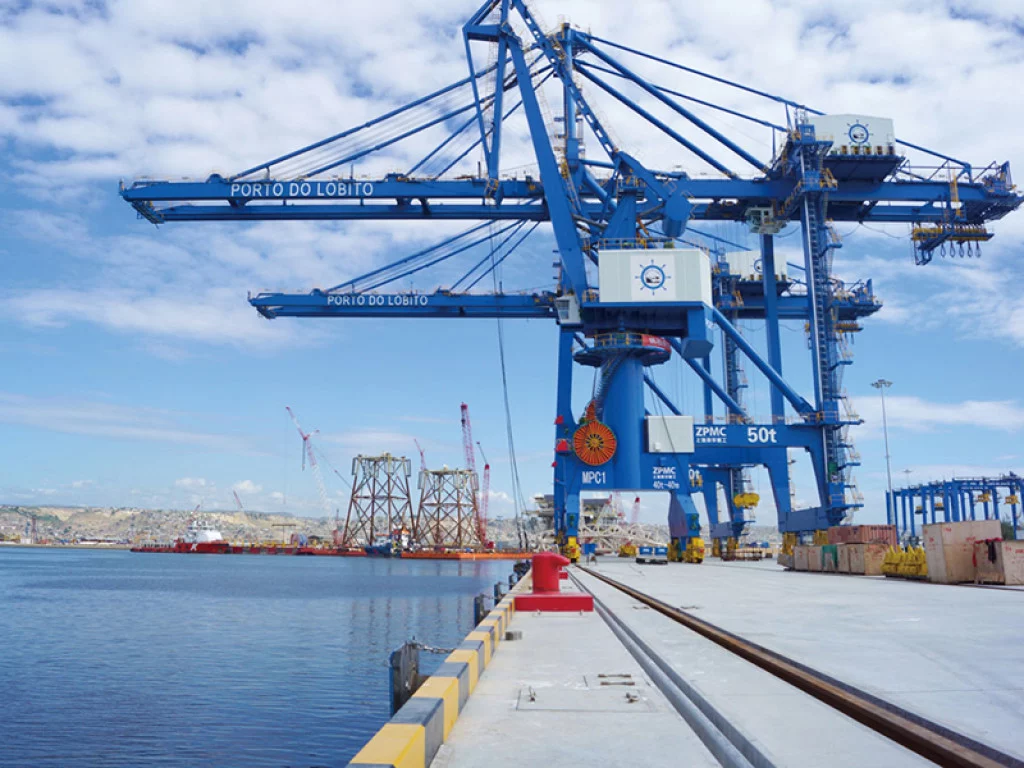
INTERVIEW: PORT MANAGEMENT ASSOCIATION OF EASTERN AND SOUTHERN AFRICA (PMAESA)
With a view to promoting regional cooperation and integration, we discover how PMAESA is strengthening relations among member ports with Secretary General, Col. Andre Ciseau
Could you talk us through the origins of PMAESA, how it came about, and its initial vision?
Andre Ciseau (AC): The Port Management Association of Eastern and Southern African (PMAESA) was established in April 1973, under the auspices of the United Nations Economic Commission for Africa (UNECA), following a recommendation made at a meeting of the African Ministers in charge of transport, held in Tunisia in February 1971. The idea behind the formation of the regional Ports’ Association was to, inter-alia, build consensus amongst members.
The Association offers an appropriate framework for the exchange of information and ideas amongst members and to create an enabling environment whereby members can interface with one another in the port, transport and trade arenas to exchange benchmarks and best practices.
Since inception, how has PMAESA developed and progressed in terms of its key objectives and the messages it tries to get across?
AC: Empirical evidence and studies have rightly pointed out that African ports will require huge infrastructure development and investment as the continent hosts the youngest and fastest growing populations. Maritime gateways, both existing and greenfield, will have to be prepared to handle an influx of cargo and services by 2030.
Additionally, oil and gas discoveries, mining, political change and the opening up of economies as well as increasing global interest in Africa’s growth potential are driving increased demand for infrastructure. In West Africa, Nigeria, with its growing economy and significant population, continues to spread its commercial interests. In the South, while growth in South Africa remains subdued, its infrastructure expansion plans, particularly in the power and transport sectors, are significant. Recent discoveries of natural resources in Mozambique, Namibia and Botswana will drive regional and corridor-type infrastructure developments.
Ports in the region can no longer operate in isolation or serve nationalistic tendencies. The silo mentality has seen the continent undergo disjointed infrastructure planning and investment. Ports are tightly integrated in the socio-economic aspirations of landlocked countries which they serve.
Sea ports are becoming parts of economic clusters supporting various related activities from adding value to export commodities by hosting Special Economic Zones (SEZs).
Intermodality is slowly but surely taking centre stage in the region. We are seeing more and more railway line project developments coming up in East African countries. This will alleviate pressure on road networks (which are costly to maintain) and reduce greenhouse gas emissions as rail can move more cargo per distance travelled.
We are seeing more membership interest from the private sector (both within and outside of the continent). We believe the private sector brings business acumen and technical expertise to the fragmented transport sector as national governments grapple with unprecedented global events such as the COVID-19 pandemic, trade wars and global economic downturns.
Private port operators are driving efficiencies in West African ports better than those at Eastern and Southern African ports, which are predominantly government owned and operated.
A number of global port logistics trends have emerged in recent decades, including the emergence of ‘hub’ ports, which facilitate dominant volumes of global trade in and out of a region. In Africa, the trend is gathering some momentum. However, this is challenged by lower cargo volumes relative to other parts of the world, poor port performance, hinterland dominance focused on certain ports, and global shipping routings that have not replicated the hub-and-spoke model more commonly found in other parts of the world.
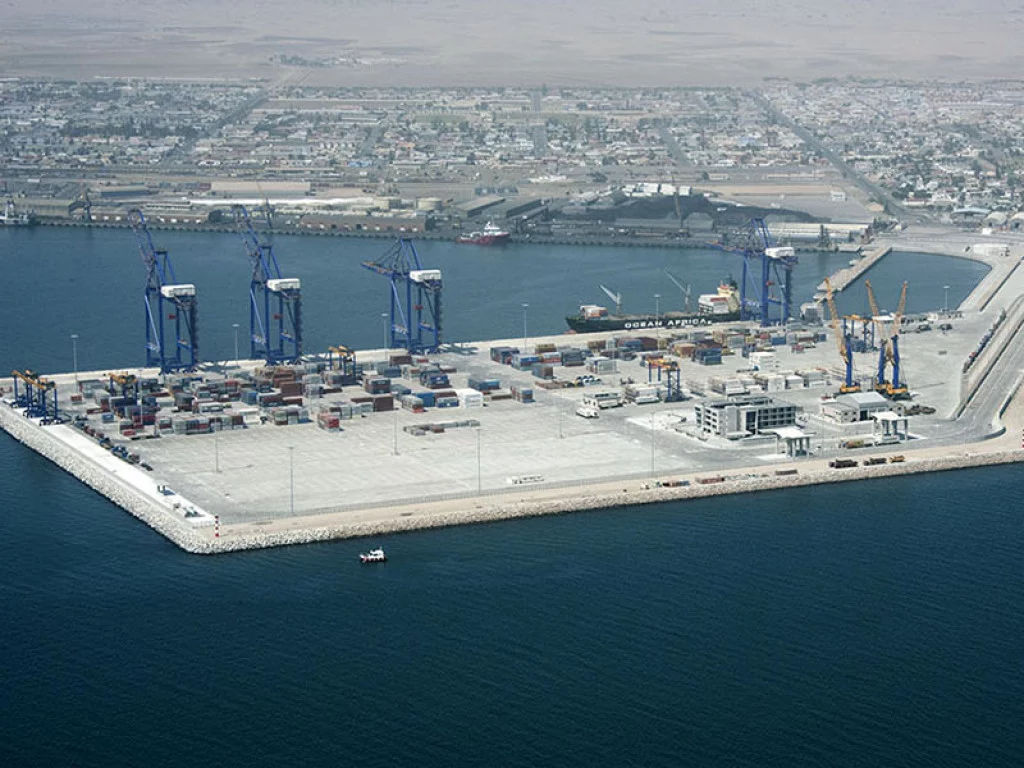
What do you find most exciting about the port logistics industry across Eastern and Southern Africa?
AC: The young and skilled population is more exposed to global current affairs. I am sure this will sensitise them to be better regional citizens and think broadly about the region’s socio-economic gaps.
There is increasing competition between ports. However, each country has tended to protect their investment by channelling trade through their own ports, regardless of the economic consequences of the price of imported goods and the cost of exports.
Port management models are gradually shifting in the region. Port Authorities are building internal human resource capacities biased towards data-driven decision making which were previously skewed by political over-reach.
Uptake of ICT and digitalisation of port operations is currently a mega-trend according to UNCTAD. This was brought sharply into focus due to the COVID-19 pandemic.
On the flip side, what are the biggest challenges it currently faces?
AC: Poor diversification of economies. Extractive and natural resource industries remain the main economic drivers; this limits growth, job creation and the multiplier effects on infrastructure investments, sustainability and country competitiveness.
The inflated cost of logistics, power and bureaucratic red tape increases the cost of African products and the cost of doing business in Africa. Transport and logistics costs total between 35 and 42 percent of production, compared to eight percent in Asian countries.
The region, for all its growth potential, trade liberalisation policies and skilled population is still largely import-centric. The EAC (East African Community) Trade and Investment Report (2020) reveals EAC exports globally stood at $6.2 billion in 2020 while imports at $35.6 billion, registering a negative balance of trade of $19.4 billion.
There is also low intra-African trade and consumer market fragmentation – intra-African trade is between six and eight percent, compared to Asia and Europe at 28 percent and 60 percent respectively.
Has the association got any projects in the pipeline you wish to highlight?
AC: We are building human resource capacity, which seeks to nurture and train professionals in African ports. In addition, we are looking to establish a regional maritime single window for the Western Indian Ocean region, to enhance maritime connectivity. The safety of navigation in inland waterways is also being enhanced, especially in the African Great Lakes Region (AGLR).
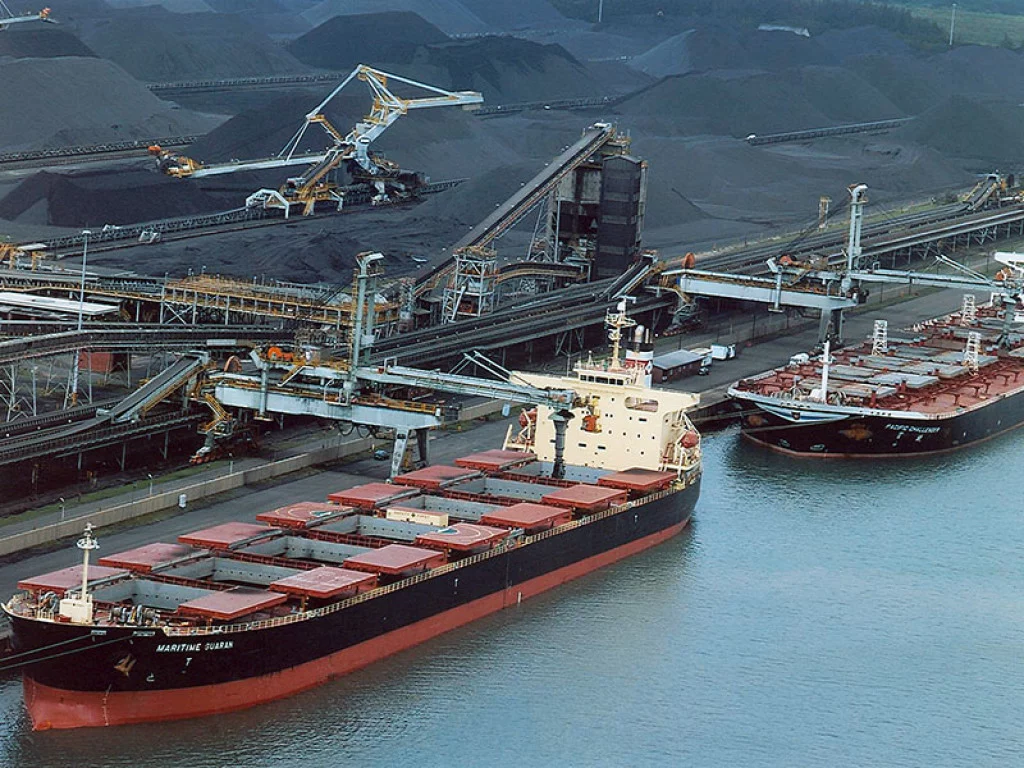
How do you see the port logistics sector developing across the region within the next five years or so?
AC:
• Accelerated shift to intermodality as railway networks are fully developed.
• Enhanced uptake of ICT and digitalisation.
• More intra-Africa trade supported by the African Continental Free Trade Area (AfCFTA).



